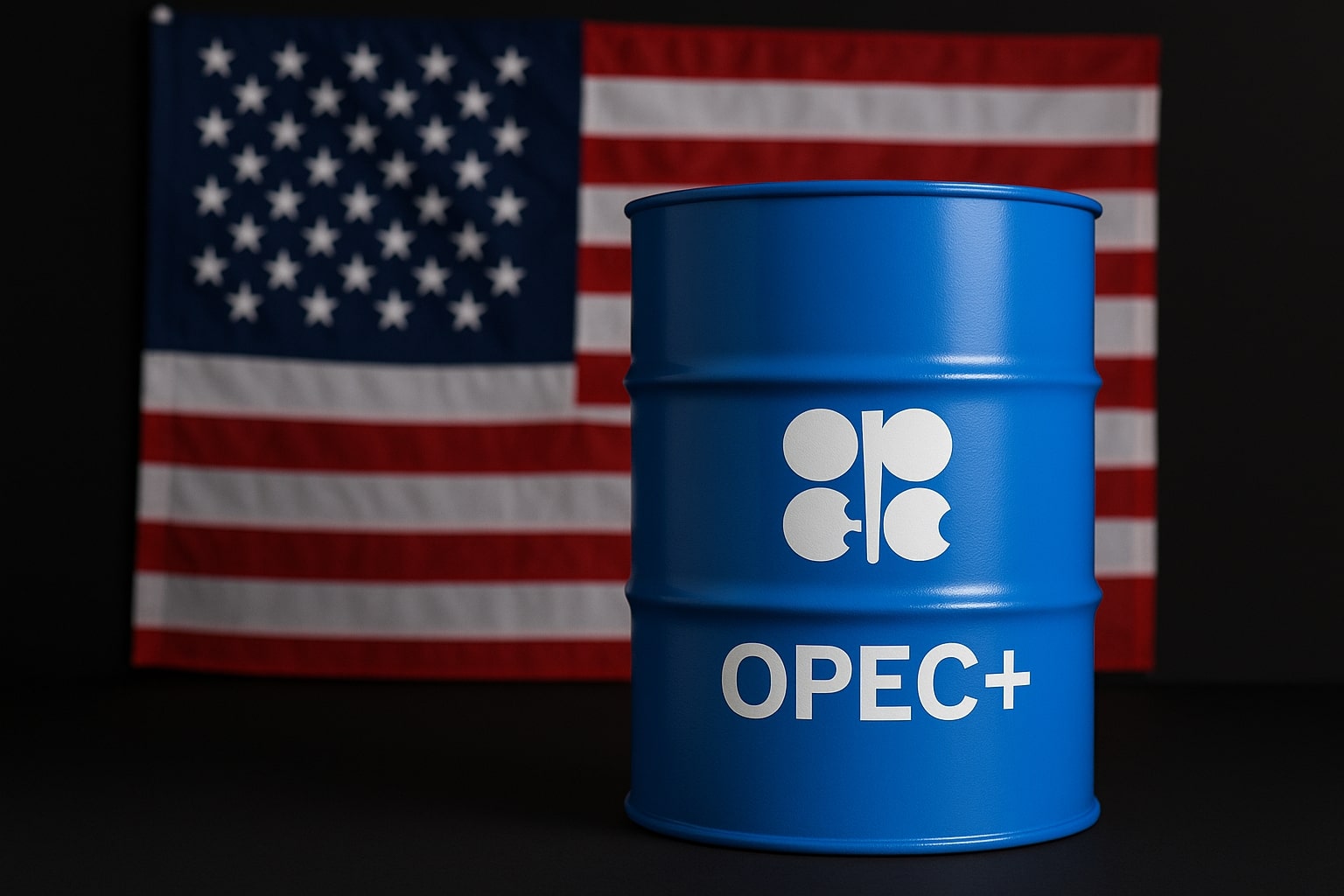
Oil Price Forecast - WTI at $62.49, Brent $66.44: Oil Squeezed Between Iraq’s 3.45M Bpd Surge and Fed Uncertainty
Rising output from Iraq and Libya drags prices despite Russian strikes and Middle East turmoil, with Brent locked under $67 and WTI testing $62 support | That's TradingNEWS
Oil Prices Struggle Between Oversupply and Geopolitical Premium
The crude complex continues to trade inside a fragile balance as supply additions from Iraq, Libya, and Kuwait battle against escalating geopolitical flashpoints in Eastern Europe and the Middle East. West Texas Intermediate (CL=F) slipped to $62.49 per barrel, down 0.3% on the day, while Brent (BZ=F) eased to $66.44, also down 0.4%. Despite headlines of Russian airspace incursions over Estonia and fresh strikes on Ukraine, traders are refusing to lift crude above its resistance zone near $67, signaling that oversupply fears carry greater weight than the risk premium.
WTI Crude Testing $62 as Market Eyes $60 Floor
U.S. benchmark WTI has repeatedly tested the $62 support, a level that has been in play since early August. If the market fails to defend this zone, the next target becomes $60, widely viewed as the line where U.S. shale economics begin to wobble. Technical charts show resistance stacked at $65 per barrel, with the 50-day moving average capping rallies. A breakdown below $62 could trigger algorithmic selling, exposing the $59–$60 corridor. The price structure has turned fragile enough that even mild inventory builds in this week’s EIA report could drive WTI into the high $50s.
Brent Crude Stuck in $65–$69 Range
Brent futures remain boxed between $65 and $69 per barrel, a sideways trade that has persisted for seven weeks. Today’s $66.44 print reflects both demand headwinds and unexpected supply resilience. Resistance remains clustered around $67–$67.50, with the 200-day moving average looming near $68.80. Without a supply cut from OPEC+ leaders, Brent risks a retracement to $63, a level not seen since July. Traders highlight that even geopolitical escalations in Israel, Gaza, and Eastern Europe failed to spark sustainable upside, a clear indication that fundamentals are overshadowing risk headlines.
Iraq’s Surge to 3.45 Million Barrels Per Day Pressures Market
Iraq has pushed exports to 3.4–3.45 million barrels per day in September, its highest level in months, after OPEC+ relaxed quotas. Baghdad is also preparing to restart pipeline flows from Kurdistan through Turkey, which could return another 400,000 barrels per day to global supply. The increased Iraqi presence comes as Kuwait confirmed a crude capacity of 3.2 million bpd, the largest in more than a decade. These additions come at a time when demand forecasts into Q4 2025 are softening, adding further weight to bearish sentiment.
Read More
-
SCHG ETF Near $33 High As AI Giants Drive 19% 2025 Rally
01.01.2026 · TradingNEWS ArchiveStocks
-
XRP-USD Stuck At $1.87 As XRPI Near $10.57 And XRPR Around $14.98 Despite $1.16B ETF Wave
01.01.2026 · TradingNEWS ArchiveCrypto
-
Natural Gas Price Forecast - NG=F Slides Toward Key $3.57 Support As Ng=F Extends 33% Drop
01.01.2026 · TradingNEWS ArchiveCommodities
-
USD/JPY Price Forecast - Yen Near 156 As Fed Cuts Meet Boj Hawkish Turn
01.01.2026 · TradingNEWS ArchiveForex
Libya Boosts Output to 1.39 Million Bpd
Libya’s National Oil Corporation confirmed production of 1.388 million barrels per day, a sharp recovery aided by returning international partners such as BP, Shell, Chevron, and TotalEnergies. Condensate output of 52,730 barrels and 2.57 billion cubic feet of gas further emphasized the rebound. The government has targeted 2 million bpd by year-end, and if realized, that would flood markets at a time when both Brent and WTI are already struggling to maintain support. Indian refiners have stepped up purchases, and European imports of Libyan crude surpassed $22 billion in 2024, underscoring Libya’s growing influence.
Iran Gas Export Slump Raises Energy Security Questions
While oil flows grow, Iran’s gas exports to Iraq have collapsed, constrained by U.S. sanctions, decaying pipelines, and Iraq’s drive to increase its own domestic production. The disruption has left Baghdad scrambling to secure power generation during peak periods, potentially redirecting some demand back into crude oil for domestic use. For markets, the collapse in Iranian gas flows carries symbolic weight — it reinforces the fragility of Middle Eastern energy supply chains. Yet despite this geopolitical fragility, Brent failed to hold above $67.15 when tested, a signal that traders remain more focused on physical crude balances than regional instability.
Russia and Middle East Geopolitics Fail to Ignite Rally
Russian fighter jets entering Estonian airspace, ongoing attacks on western Ukraine, and Western recognition of a Palestinian state all injected volatility into global headlines. Normally, such events would spark sharp crude rallies, but the absence of sustained buying shows that traders are discounting politics without direct supply losses. WTI and Brent retreated almost immediately after knee-jerk gains, reinforcing the bearish undertone. Brent, which briefly tested $67.15, slid back under $66.50 by midday.
Macro Pressures and the Federal Reserve Overhang
Monetary policy is adding another layer of weakness. Federal Reserve officials have pushed back against the need for additional rate cuts despite inflation running above 2%. That keeps the U.S. dollar strong and caps global oil demand. Earlier this month, dovish bets briefly drove WTI above $65, but with Fed rhetoric shifting, crude lost its monetary tailwind. Unless macro conditions change, oil prices will remain tied to physical oversupply rather than speculative relief rallies.
Buy, Sell, or Hold on Crude at Current Levels
With WTI at $62.49 and Brent at $66.44, the market sits on critical support zones. Iraq and Libya’s aggressive production adds bearish momentum, while Iran’s fragility and Russian geopolitical tensions provide only temporary spikes. The most realistic scenario is further range-bound trade with downward bias. If China steps up stockpiling as it did in September, support could hold and drive Brent back toward $69. But without that demand, both benchmarks risk slipping lower. Based on the balance of data, the outlook is cautiously bearish, leaning Hold, with a potential test of $60 for WTI and $63 for Brent in the near term.



















